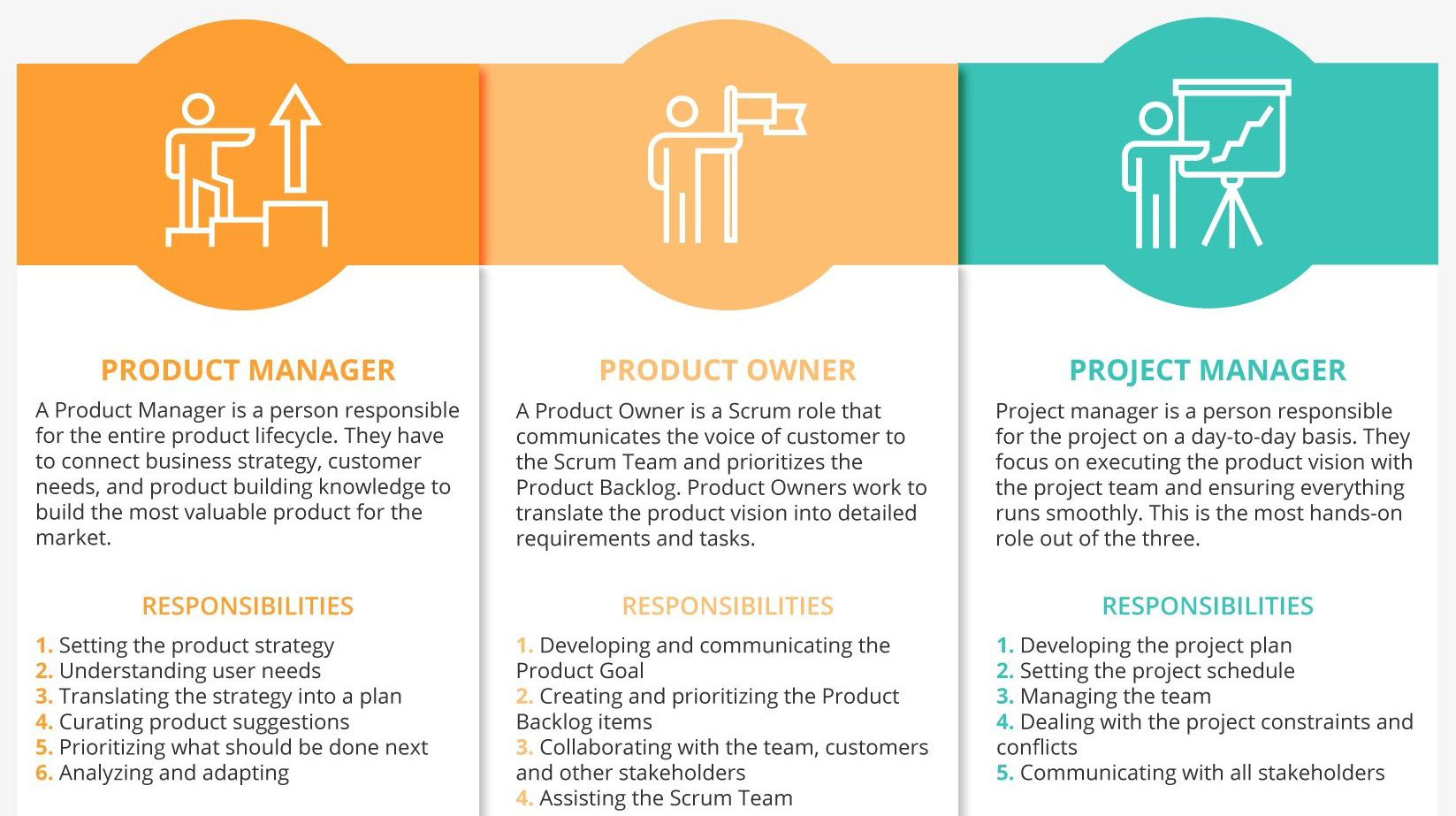Table of Content
- Product management - the origin story
- So, what is product management?
- What do product managers do?
- B2B is still about humans
- Take tips from the arts
- Product management is tough
- What about product owners and project managers? What do they do?
- What is the scope of product management in India?
- What do I need to have to become a product manager?
- What specific skills do I need to become a successful product manager?
- The final word
If you think of businesses that have reshaped the world (Uber, Airbnb, Apple, Google, Facebook) what do they all have in common? A worldview? Great leaders? The ability to solve real problems? Yes, all of these things and more. They are also businesses with great product management examples.
Product management is all the rage and those who form an integral part of this – product managers – are now the new cool kids on the block.
Product management - the origin story
Product management is not a new concept. It’s just the term and role that has suddenly caught on due to a surge in product companies. In fact, it has a lot to do with two businesses – Proctor & Gamble and HP – who brought it into fashion in the 1930s and 1940s.
For P&G it was Neil H. McElroy, a junior executive, who drafted the famous brand men memo in 1931, which formed the seeds of what product managers do today.
HP created product managers as a bridge between the engineers and decision makers so the former could focus on their roles while product managers could reach out to the CEO directly and keep pace with customers.
The transition from brand men to actual product managers also realized the distinctions between B2B and B2C companies. For FMCG businesses, those who seemed to be product managers “did not get involved in the product creation process but focused on studying the needs of customers and tailoring products to their needs.” For HP, the tools and software could be used to refine the role of a product manager to solve customer problems directly.
However, the product manager role is not used universally and Microsoft still refers to them as program managers.
So, what is product management?
The term may conjure up images of late-night brainstorming sessions, product prototyping, and lots of people management. Though it is all of this, it’s also a great deal more!
The product management process is the ‘nuts and bolts’ of a product. Essentially it is product lifecycle management, which is managing everything from ideation and conception, to creation, testing, deployment, go-to-market strategy and all the steps in between.

Source: Infinity
What do product managers do?
Product managers have to manage all of this but they must ensure that the product actually solves a problem. It needs to make the lives of potential customers better or easier while providing returns to investors.
If not, it’s like creating a pair of shoes that are great for walking on the moon but forgetting that most of us won’t do so, if ever.
There has to be an actual market need for the product and customers would consider buying it. It must also be timely, relevant, and – especially when considering the B2B sector – tested, upgraded, and bug-free. But don’t worry, even the biggest businesses get it wrong sometimes!
B2B is still about humans
Though there may be differences between B2C and B2B businesses (metrics used, approach, target market) product managers must realize humans still run both. They should follow roughly the same path when laying out the product roadmap across its lifecycle, from conception and creation to development and dissemination. It’s a bit like being a parent to a newborn child and taking care of her or him from its first steps, adolescence, teenage years… all the way to adulthood.
Take tips from the arts
Many comparisons of a product manager’s role can be drawn from the arts, including film and music. The roles of a film director and music conductor are similar to a product manager who has to ensure the various teams (designers, engineers, developers, etc.) are performing in sync.
Both a film director and music conductor must have a clear idea of what the final film or piece should look or sound like: this is their vision. In the case of product managers, the product must closely align with the business’ vision and what it stands for, and who it’s going to benefit. This should take into account everything from features and offerings, to look-and-feel, design, UI, UX, quality, etc.

Product management is tough
Don’t be fooled by products that are great. A lot of time-consuming work has gone into the final product. Prototypes, frustrations, late nights, confusion, and chaos; basically, the stuff you don’t see when it’s ready.
To survive you need technical skills and a personality that’s calm under pressure, efficient and sometimes ruthless, and has a big picture view.
Product managers need to keep learning. Read, research, and solve problems. Learn to think critically, nurture your creative side, and work with diverse groups of people. Listen and observe, manage time efficiently, delegate, and communicate effectively!
There’s a lot to pack in on top of understanding the product in and out (technical, hardware and software, frameworks & processes, data crunching, analysis and insights, etc.).
What about product owners and project managers? What do they do?
The roles of project managers and owners definitely may overlap with that of product managers, but again each business may define these in their own way.
Project managers may look more closely at deliverables and timelines. This could include milestones, setting up meetings, ensuring communication between stakeholders, and determining project scope, budget and timelines. Some of these functions may also fall under a product manager but a project manager doesn’t generally get involved in the product’s development.
In some cases product owners may be more deeply involved in the technical aspects of the product and actually be a part of the building process, working internally. The product owner may deep dive into the ‘nuts and bolts’ of the product and be part of the testing, fixing bugs, and QA process.
However, a product manager may play part in this though may not directly work at the same level. She or he looks at the overall strategy of the product, including research, timelines, costs, teams, marketing, etc.
To get more insights into these differences it helps to understand agile product management and the Scrum framework. The main point is all three roles need to work as closely as possible and collaborate throughout the product development process.

Source: Teamhood
What is the scope of product management in India?
You may have heard of and been allured by a lot of high-paying job ads for product managers in India. Well, because of the spate in tech product building being a product manager is now the go-to job. More so as there is a diversification in tech products across industries, sectors, and types, this role has a lot of weight and the expectations are high.
However, unlike mature markets like the US, India is still playing catch up by about 15 years. So there’s still a lot of confusion around what exactly the role entails and where its boundaries are. Your best bet is to go into it if you’re really dedicated to a product that can solve problems for customers. To build great products that are actually useful for customers is not easy and you need some specific skills – hard and soft – to succeed.
What do I need to have to become a product manager?
It would help to have a degree in business, engineering/IT, or even sales/marketing but this is not a prerequisite. You could even take a product management course and gain a certification. However, given the blurred lines within the role, a lot of your knowledge will emerge through experiential learning, intuition, and gut feeling. Sticking it out and being able to make tough decisions with little time requires practice and dedicated research and training.
Remember, you need a thick skin, be highly motivated, and have some relevant training and experience, preferably across industries. It’s an added bonus if you’ve worked with diverse teams and have a certain type of mindset and personality, though this can be cultivated.
What specific skills do I need to become a successful product manager?
There are a number of specific product management skills required to succeed. You need to lead from the front: motivation is key and being a trouble-shooter for almost anything product-related is crucial. You need to handle pressure and maintain calm while ensuring product delivery is on track.
You definitely need great communication skills that are clear, concise, and simple yet effective. Dealing with varied groups of people (engineers, sales & marketing teams, leaders, owners, etc.) is not easy and building products requires teamwork.
There’s also prioritizing and delegating. You can’t be everywhere at once and do everything, so you need to decide what requires priority. This also means being great at managing time, and expectations, and knowing how to share the workload, with who and when.
It’s really easy to get bogged down by day-to-day issues so product managers need to constantly think of the big picture and have a clear product vision and roadmap. This ability to think strategically and for the long term is a must to help overcome problems that may emerge along the way.
It also helps to have a technical background and know the basics of product lifecycle development principles, the building of IT products, and determining their timelines.
Understanding market research fundamentals, persona creation, customer data analysis, and drawing insights are also critical.
The final word
Let’s get this out of the way: product management is not easy. It takes hard work, time, practice, experience, and learning from mistakes along the way. There’s no sure-fire guidebook or manual that will provide you with all the answers you need but if you keep reading, doing the research, talking to people, observing, learning, and unlearning, you will evolve and get better.
Keep networking, manage your time well, prioritize, stay focused and remember to look at the big picture. Mistakes and failures are part of the process but it’s what you learn from them that will help you build great products.
Happy building! Stay curious!

